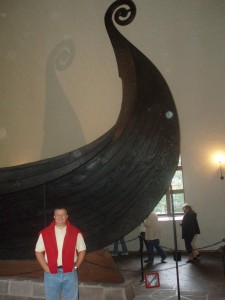 In yesterday’s blog, I talked about philanthropy in other countries and it generated a comment from a reader that got me thinking. She said that other more “socialist” countries reduce the need for philanthropy because they tax their people heavily and provide those services. As I chewed on this comment, it got me thinking about the role that government funding has played in the USA for countless numbers of non-profit organizations, and I started worrying about the future.
In yesterday’s blog, I talked about philanthropy in other countries and it generated a comment from a reader that got me thinking. She said that other more “socialist” countries reduce the need for philanthropy because they tax their people heavily and provide those services. As I chewed on this comment, it got me thinking about the role that government funding has played in the USA for countless numbers of non-profit organizations, and I started worrying about the future.
I cannot think of many non-profit organizations (except for churches and maybe the Boy Scouts of America) who didn’t jump on the government funding bandwagon back in the 1990s. Government tax roles were healthy and there was talk of surpluses. It became easy for non-profit leaders to cozy up to their local politicians and secure a bushel basket full of government funding, which made it easier to expand services and dial-back the breakneck fundraising pace some organizations had set for themselves.
When the human body stops using certain muscles, those muscles atrophy and turn into saggy fat. I am left wondering how many non-profit organizations got used to government revenue streams and lost their edge with regards to resource development and fundraising.
As you know, I just returned from a European vacation and they are in the exact same boat as the USA with regards to debt, deficits and economic pressures. I believe we can look at what is happening in Europe as a preview of what is about to happen in the USA with regards to government spending. I can sum it up in one word . . . “AUSTERITY” . . . which means cuts to government services.
I read a front page newspaper article while in London about how a neighboring city was eliminating curbside garbage service for their residents. Our Canadian dinner couple on the cruise ship also shared with us that their hometown of Toronto was looking at similar proposals around garbage pick-up, closing parks and museums, and increasing student-teacher ratios.
I really don’t think that it is a jump in logic to assume that there will be many non-profit organizations here in the USA who will see their government funding eliminated or substantially reduced in the upcoming few years.
Since you can’t just turn on and off the fundraising spigot (remember that fundraising all about relationships which often take time to develop), I recently have heard a number of my non-profit friends talking about service cuts and downsizing . . . and downsizing means people losing their jobs and clients losing services they depend upon.
So, who is to blame for this situation?
- Should we blame the government and our politicians for creating an unsustainable situation that created an environment of entitlement throughout the non-profit community?
- Should we blame non-profit CEOs and resource development professionals for securing government funding without realistic sustainability plans to replace those revenue streams?
- Should we blame non-profit board volunteers for allowing their staff to “do whatever it takes” to secure funding without asking the tough questions pertaining to sustainability? Or for possibly shirking their fundraising responsibilities because government funding made it easy to do so?
Maybe I am just grasping at straws here, but perhaps the creators of the television cartoon show, “South Park,” got it right when they suggested we should all just “Blame Canada“. Click on the link to enjoy Robin Williams’ performance. LOL
All kidding aside, I know that the blame game is typically a dumb activity, but I seriously wonder what you think? Who do you think played a bigger role in digging many non-profit organizations into this hole? And the better question is: What do you think those “overly-dependent-government-funding” organizations need to start doing today to avoid hitting the iceberg that is in front of us all? Please weigh-in and share your opinion because we can learn from each other!
Here is to your health!
Erik Anderson Owner, The Healthy Non-Profit LLC eanderson847@gmail.com http://twitter.com/#!/eanderson847 http://www.facebook.com/eanderson847 http://www.linkedin.com/in/erikanderson847










